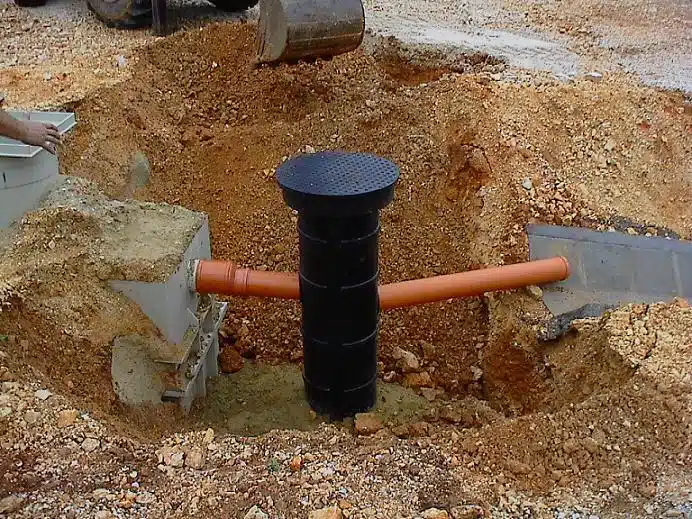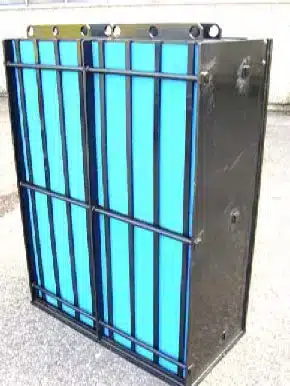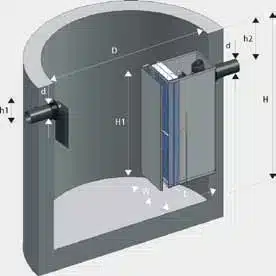Ever thought about how Ohio businesses keep their wastewater clean and follow environmental rules? The secret might be under your feet. Ohio Below Ground Oil Water Separators are key in stopping stormwater pollution and treating industrial wastewater. They’re not just hidden tanks; they protect our water resources silently.
Oil-water separation systems are crucial for Ohio’s environmental rules. They work hard to keep harmful oils and contaminants out of water before it goes back into nature. With tougher rules for businesses, the need for effective and dependable separation solutions is growing.
Key Takeaways
- Freytech Inc. Below ground oil water separators are vital for environmental compliance in Ohio
- These systems effectively manage stormwater and industrial wastewater
- Underground storage tanks offer discreet and space-saving solutions
- Oil-water separation systems help prevent water pollution
- Proper installation and maintenance are crucial for optimal performance
Understanding Below Ground Oil Water Separators
Below Ground Oil Water Separators are key in treating wastewater. They remove oils and pollutants from stormwater and industrial runoff.
How They Work
These systems use gravity and special plates to separate oil from water. As water moves through, oil floats to the top. Clean water then flows out below. This method is vital for managing industrial wastewater.
Key Components
Underground systems have several crucial parts. These include inlet pipes, coalescing plates, and oil collection areas. Each part helps clean the water effectively.
Benefits of Below Grade Installation
Installing these separators underground has many benefits. They save space, stay safe from the weather, and keep areas tidy. These systems can clean water to very low oil levels, often less than 15 mg/L for oil droplets 30 microns or larger.
Ohio Below Ground Oil Water Separators: Regulations and Compliance
Ohio has strict rules for managing oily wastewater to protect the environment. These rules apply to industries, vehicle maintenance areas, and stormwater systems. Below ground oil water separators are key in following these standards.
These systems must work well and keep effluent quality high. They also need regular maintenance. The right design and setup are important for effective treatment. Not following these rules can lead to big fines.
Ohio’s rules help prevent groundwater pollution. Facilities must use strong spill containment equipment. This protects against accidents that could harm local ecosystems.
Regular checks make sure these systems work right. Technicians look at all parts to ensure they’re working. They also check if the separator removes oil from water well. This is crucial for protecting the environment.
Following these rules helps Ohio businesses keep waterways clean. They avoid big fines and support technologies that fix groundwater issues. It’s not just about following the law; it’s about caring for the environment.
Types of Below Ground Oil Water Separators Available in Ohio
In Ohio, industries have many options for Below Ground Oil Water Separators. These systems are key for managing industrial wastewater and fixing groundwater issues. Let’s look at the main types found in the state.
Fiberglass Oil Water Separators
Fiberglass separators are a favorite in Ohio for their resistance to corrosion. They fit well in many places and are a top pick for businesses. These systems last a long time and require little maintenance, making them a smart choice for industries.
Steel Oil Water Separators
Steel separators, like the ROS Series, deliver top-notch performance. They are strong and can handle tough industrial conditions. Many Ohio companies pick steel separators for their durability and dependability in hard environments.
API Oil Water Separators
API separators are made for big-scale use in the oil industry. They meet American Petroleum Institute standards. These Below Ground Oil Water Separators can handle large amounts of wastewater, making them perfect for big industrial sites in Ohio.
Each separator type has its own benefits. The best choice depends on your specific needs and industry. By selecting the right one, Ohio businesses can better manage their wastewater and help the environment.
Installation Process for Underground Oil Water Separators
Installing Below Ground Oil Water Separators is a complex task that requires careful planning. The process begins with digging a hole for the unit. Then, workers place the separator in the correct spot and connect it to pipes.
They use special sealants like CS-440 and CS-102 to prevent leaks at the joints. This ensures the system works well from the start.
Proper setup is crucial for these systems to function effectively. When installed correctly, they can separate oil from water as needed. This helps businesses meet environmental standards. The setup also includes adding spill containment equipment to prevent accidents.
After setting up the separator, workers fill the hole with dirt. This step is done with care to avoid damaging the unit. Many places treat these separators like underground storage tanks for safety. A well-installed system ensures it lasts and keeps water clean.
These separators are crucial in storm water systems. They process runoff to meet the US EPA’s Clean Water Act standards. With effective oily water treatment, facilities protect the environment and dodge big fines.










